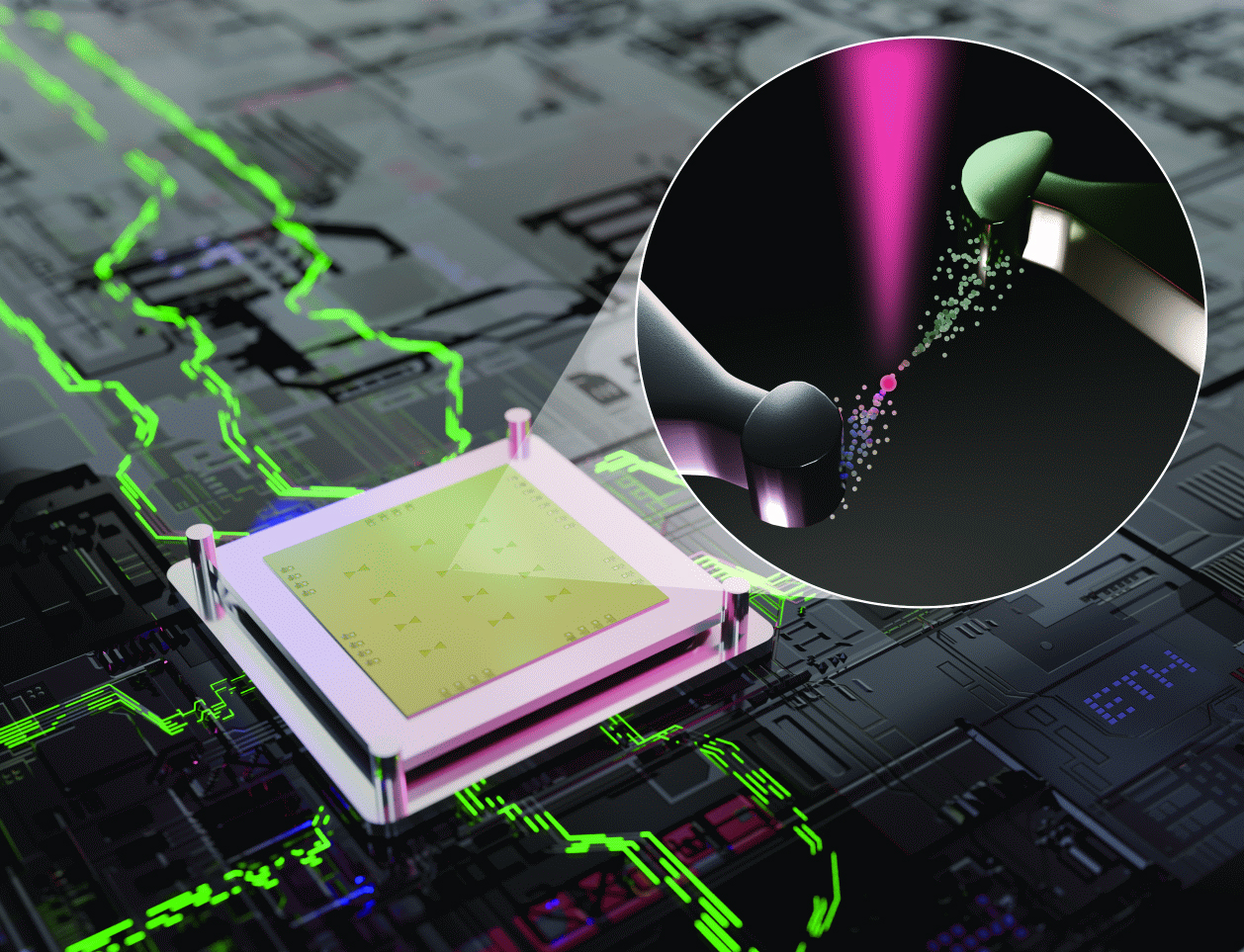
Atomic-scale light source discovered
Every now and then, researchers make entirely unexpected discoveries. At the Center for Single Atom Electronics and Photonics at ETH Zurich, Jürg Leuthold and his team scored one such lucky strike when they observed that some of their single-atom switches also generate light. A world’s first with great potential.
The atomic universe is always good for a surprise – a fact that Jürg Leuthold and his team at ETH Zurich are happy to confirm. In a project financed by the Werner Siemens Foundation, the researchers are currently developing a revolutionary atomic-scale switch. In their work, they experiment with electrical components called memristors. Specifically, they’re trying to create electrical circuits within the extremely limited space on these minuscule components by moving a few, or even single, atoms.
To this end, the team use silver and platinum pads that act as electrodes and are separated by an incredibly small gap. When a switch is turned on, a control voltage is applied and a silver atom moves into the narrow gap, closing the circuit and generating an electric signal. But that’s not all, as Leuthold and his team write in a study recently published in Light: Science & Applications. They discovered that when the electric voltage is generated, light particles (photons) are also emitted.

Visible to the naked eye
The discovery – the journal’s cover story – was a surprise, Leuthold says, adding: “We’re talking about a completely new, previously unknown light source.” And although they’re generated on an atomic scale, the light particles are visible to the naked eye. In their study, the researchers also explain exactly how the photons are released: the local change in the atomic composition causes luminescent centres to appear on the amorphous silicon oxide pad. When the centres are electrically stimulated, they release photons.
In addition, the photon emission isn’t limited to components with a silver and platinum electrode on a silicon oxide layer. In their study, Leuthold and his team write that they’ve now already observed much stronger light emissions on memristors where two silver electrodes were combined with a transmission medium made of the thermoplastic PMMA.
A boost for quantum technologies
For Leuthold, the most interesting part of the novel mechanism is that it turns an electric switch into a light source. “Today, researchers who want to use light particles in a memristor have to build a separate laser and then integrate it into the component.” The problem is that laser light sources installed directly on microchips don’t function at the atomic scale. Size-wise, they lie within the micrometre range – much too big for industrial production in today’s small transistors that operate on the scale of nanometres.
Leuthold says that researchers are very interested in equipping transistors with compact light sources for use as photodetectors or for linking processors with memory. Another application could be found in quantum communication, which depends on light sources capable of emitting just a single photon. Last but not least, these kinds of photon sources would be extremely useful in neuromorphic computing, a process in which researchers try to make the electric circuits on microchips mimic neurological activity in the human brain.
Ideas unlimited
The newly discovered atomic light source is not only interesting for application in future transistors that are still being developed, Leuthold explains: it would already function in today’s standard silicon-oxide semiconductor elements (CMOS), the microchips used in modern computers and many other electronic devices. This is particularly encouraging news, as today’s semiconductor electronics are reaching their limits: the smaller the components get, the greater the power loss between the individual elements in a circuit. The innovative optical switches would consume significantly less energy.
In their study, the authors write that their discovery could open the door to an entirely different way of producing their single-atom switches, namely embedding the electrical and optical functionalities on a component measuring just one nanometre. Leuthold says his team already have several ideas about how to use the new light source, adding with a smile: “Of course, we don’t want to give too much away.”



